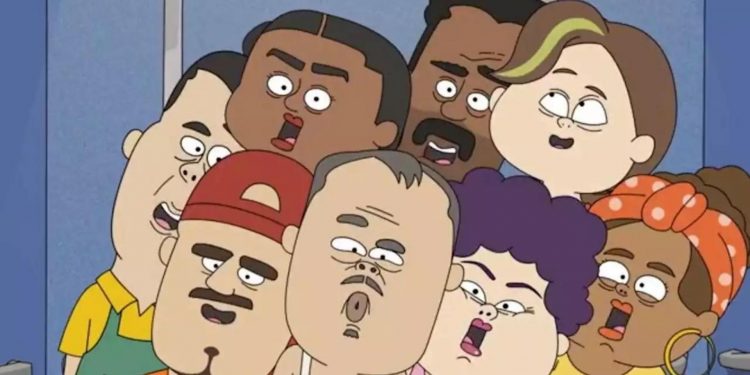There are two types of people: Those who watch cartoons, and those who don’t — and local animator Ervin Han blurs the lines between them every day.
First inspired by the likes of Studio Ghibli in his college years, Mr Han has a theory that cartoons hold a nostalgic place in the hearts of many.
“Sometimes, even if you drag your ‘too-old-for-cartoons’ friends to watch a Pixar film, they would still cry themselves silly,” he says. “Maybe for a moment, they remember that there is something very special about this form of storytelling, and maybe they go back to their childhood again for a little bit.”
Driven by the fantastical method of storytelling and the boundless nature of the animated universe, Mr Han and team went on to produce a string of regionally-acclaimed short films.
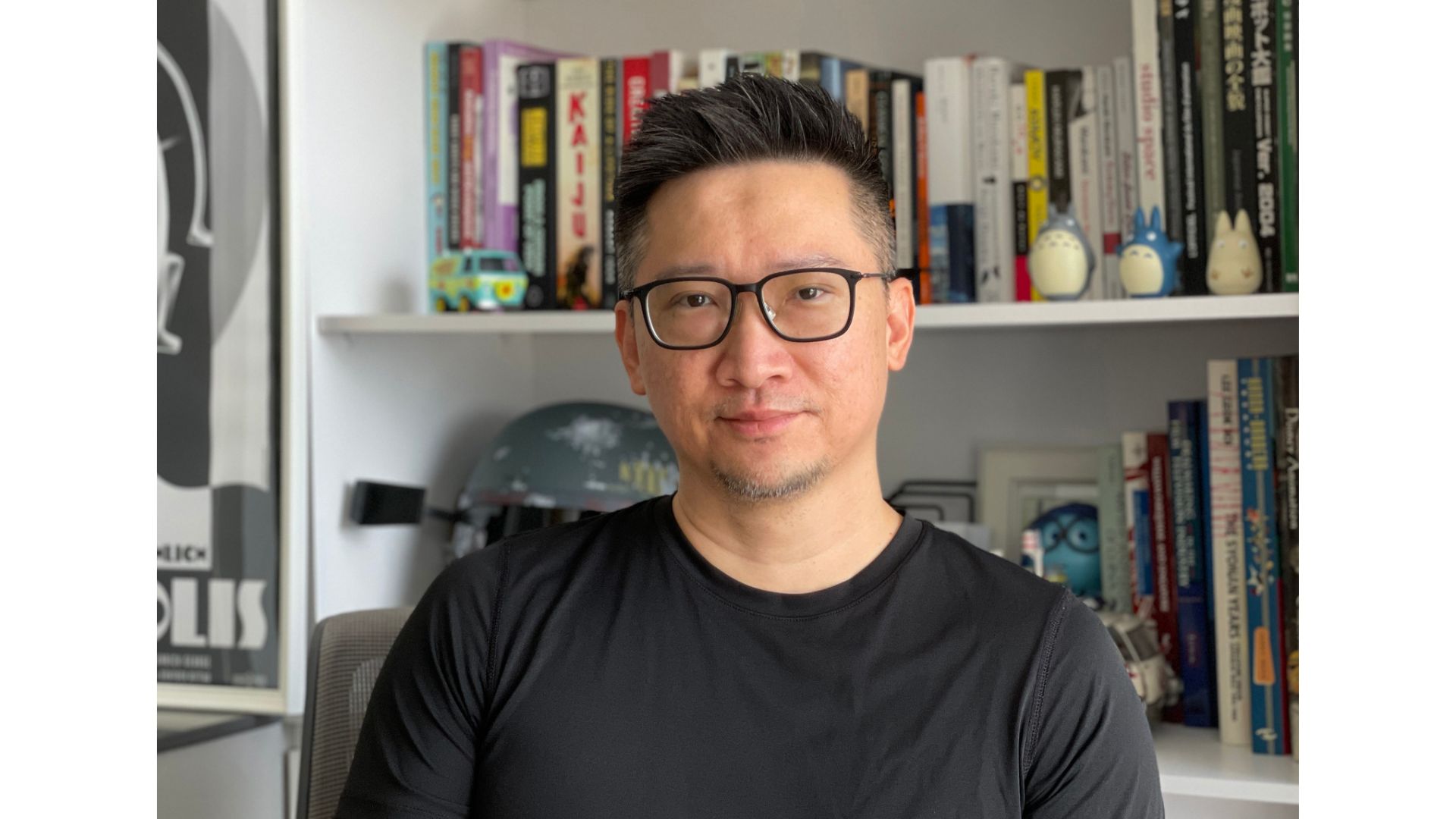
“For most people, the perception is still that animation is something only for children, even though that’s really not the case,” says the co-creator of Robot Media Playground, an award-winning team of artists, animators and producers.
With the rise of adult animation content like Bojack Horseman, Rick and Morty, and Family Guy on major streaming platforms, Mr Han foresees a growing demand for such content.
“I think animation in Singapore and the region will benefit from the opportunities presented by this rapidly evolving media landscape and a shifting focus to local creators,” he says.
He took his bold ideas to Mediacorp, and pitched an unprecedented attempt at a locally-grown adult animation series with the simple premise of “aunties and uncles behaving badly”. They were, as he puts it, “crazy enough to go with it”.
“They were really open to trying something different,” says Mr Han — and wise they were for it. Today, Downstairs is streamed widely and regionally on Netflix and MeWatch, and the winner and nominee of multiple accolades, including the Asian Academy Creative Awards and Asia Contents Awards.
TheHomeGround Asia sits down with Ervin Han to peek into the world of cartoons, their growing place in the region, and the power they have to tell unique locally-based stories.
TheHomeGround Asia (THG): Tell me more about the animation scene in Singapore.
Ervin Han (EH): It’s quite a small sector compared to the rest of the media industry. Animation in Singapore has been around for only about twenty years. It’s a relatively young part of the creative arts industry here. There are really only a few studios that are producing commercial, original animation. A good way to tell is to just turn on the TV and watch our local channels or MeWatch. Not much local animation is [being aired] on them, and most, if not all of it, are for kids.
THG: Is that why you’re trying to inculcate as many Southeast Asian elements into your work as possible?
EH: For me and my co-founder, Bernard [Toh] — we both come from an environment where we produce a lot of animation for international clients, most ostensibly Western clients. At the top level, they would be the likes of Disney, Nickelodeon, Cartoon Network, and other international broadcasters. The characters would almost always sound American because the market is international, and by that, it means that they usually sound a certain way — they can’t sound too local, since the US has such a strong influence from a commercial standpoint. Animation can easily be dubbed into different languages, of course, but the original shows we worked on always had the veneer of an ‘American-made’ show, even if they were created locally.
We did that for about a decade, and then when we started Robot Playground Media about eight and a half years ago, we wanted to use our craft and experience to find more local stories, create animated content that feels like it came from our own voice. That doesn’t mean just sounding Singaporean, it means having a distinct local flavour and context. An international audience can watch and enjoy it, but if you are born and bred in Singapore or Southeast Asia, it means something a little bit more to you. You can probably relate to certain story points, character traits, locations, or situations a little bit more.
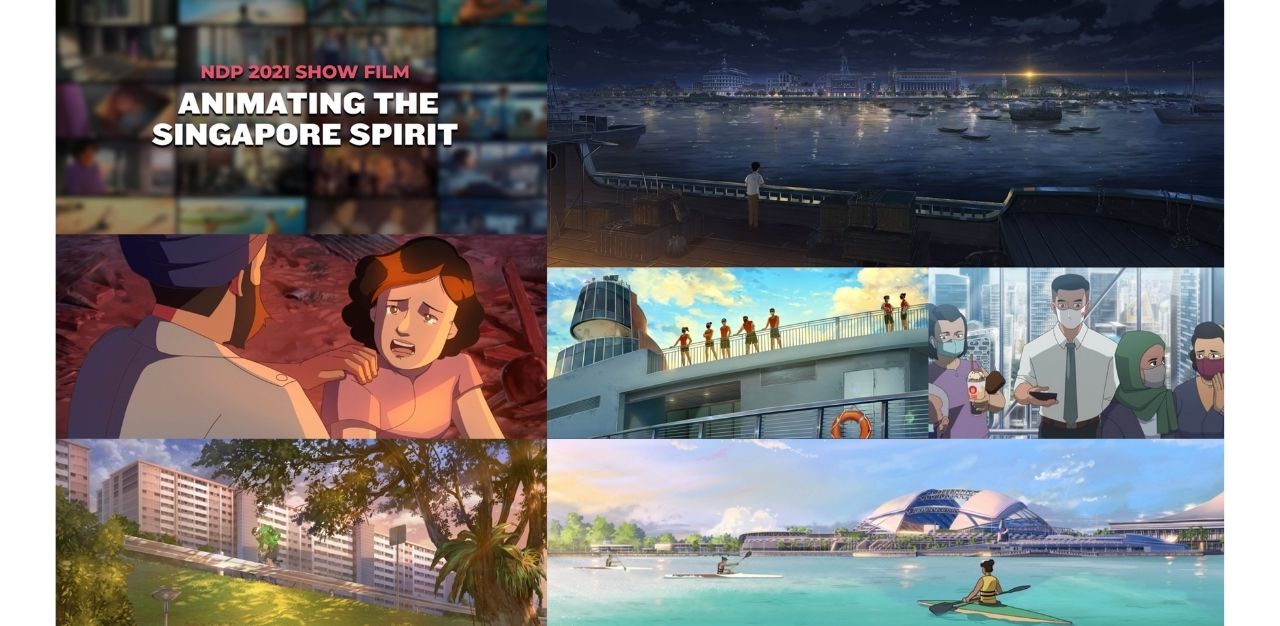
At the point when we started, no one was really doing that. Everyone who was interested in animation just wanted to make the next big hit on Cartoon Network. But I think we wanted to do something a little different and didn’t really think too much about how commercial it could be. It’s just something we wanted to get out of our system.
THG: Is the demand for content that is more localised to our region growing?
EH: A lot of clients come to us now, wanting us to not make the exact same thing as what a Western studio would make. Maybe similar, but infused with a different flavour. I think there is a real demand now for content that feels a bit more local or regional. Currently, I’m co-directing a show for Cartoon Network called Lamput, along with three other studios from Malaysia, Thailand and the original Indian studio that created the series. It’s an international, Emmy-nominated show, but the different Southeast Asian studios are encouraged to introduce some local elements and flavour into the stories – and that is the point.
Hit shows will always be hit shows. But increasingly, I think they do want something that feels more local, but can still travel internationally.
Another example is when Disney came to us two years ago to produce a series of Mickey Mouse animated shorts Mickey Go Local, (available on Disney Plus), except that the stories had to be set in Singapore and Malaysia. So we’d have Mickey Mouse flipping a prata, and Donald Duck hustling in a hawker centre. There was an episode that was set in Georgetown, Penang, another one in the Sabah rainforest where they come across Orangutans. There was also a Chinese New Year episode where Mickey and friends lo hei. So we take classic properties and give them a fun, different spin in a way that only we can do. I’m hopeful that there will be more options like this for studios around the region, and certainly in Singapore.
THG: What were some of the struggles you would face when you try to localise your stories?
EH: How ‘local’ to make it, really. It’s often very tempting to oversell local culture in the name of being local, but I think there’s always a balancing act there. Every project is different. For example, for Lamput, something like a prata would be a little bit too culture-specific, because it’s an international show that does very well in the US. So we have to be mindful not to have something too esoteric such that a young foreign audience doesn’t understand. For the Mickey Go Local series, it was fine, because they wanted it specifically based in Singapore and Malaysia, and the target audience is by and large Asian.
THG: Which piece of the work are you the proudest of in your career?
EH: It’s quite a cliché to say but every project is sort of precious and we are all proud of them as a studio. I think one thing that I’m proud of is that so much of our content has the DNA of many Singaporean artists that have passed through our studios. We have a core team in-house, but we engage with many freelancers on a project basis. We’re never too sad when staff leave the company; they might find other pastures or want to explore being freelancers, but many of them come back and work with us for other projects, or even rejoin the company. So the fact that we produce quite a distinct brand of local animation with so many Singaporean animation artists is something I’m very proud of.
THG: Tell me more about Downstairs.
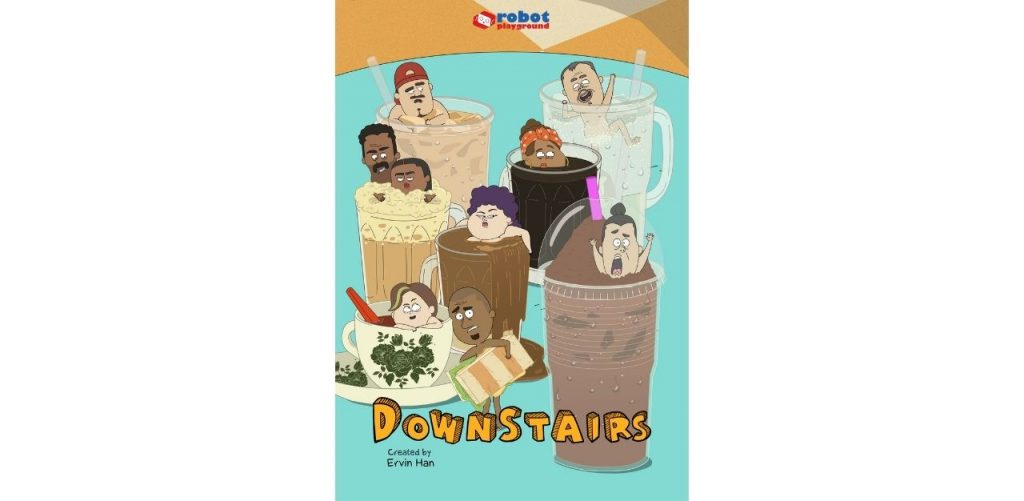
EH: I’ve always wanted to do an adult animated comedy. Our first attempt was Heartland Hubby back in 2015 (for Mediacorp Channel 5). It was ten episodes and was never renewed for a second season. But I’ve always believed that there is an audience for adult animation in Singapore, especially over the last several years where streaming has become such a prevalent platform in our media landscape. Everyone now has a streaming service.
At my age, I’m not ashamed to say that I’m quite “uncle” already. So a lot of the observational humour and situations in the show came quite easily for me. It’s really based on the daily frustrations and first-world problems in Singapore. Cartoons are often a vehicle for fantasy and wish-fulfilment. Downstairs is no different, except it’s for adults.
The context is very local, and the content is quite adult. I have friends who watch Downstairs with their kids, thinking that since it’s animated, it must be a kids’ show, and within the first minute they have to shut it off.
What’s interesting is that the show lets us talk about some topics in a way that allows us to bring it to a whole new level of exaggeration and fantasy that will be difficult to pull off in live action. For us there is really no limit or rule to how far we can go. The whole world could blow up and the next day, everything goes back to normal.
THG: What’s the conceptualisation process like for each episode?
EH: We start with a story group, which actually consists of some of the actors in the show like mrbrown and Rishi Budhrani. We sit around for a few hours in a room to just chit chat and brainstorm, and I think they love it. On the side, my writer and I will just take notes.
They will just come up with crazy things. Once, mrbrown said something random like, “Wah, what if one day we fart and there’s no sound?” and I just thought that was quite hilarious – because wouldn’t you be worried if you wake up one morning and there’s just no sound when you flatulate? So it became part of an episode where a character asks for bedroom advice and it’s executed wrongly, resulting in her partner’s soundless farts.
It’s mostly about daily life and first world problems, and touches on evergreen issues here in Singapore like education and cost of living. At the end of the day, it’s about aunties and uncles behaving badly.
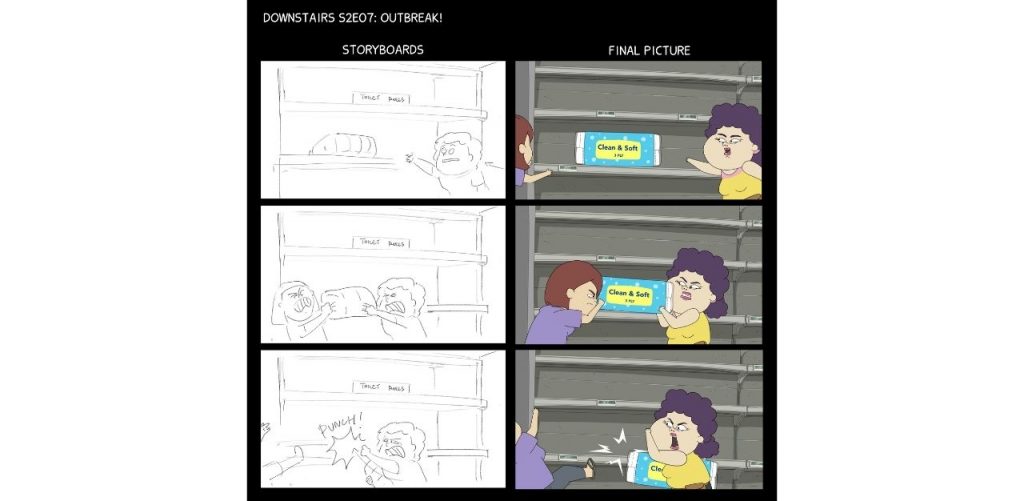
THG: Which are some of your favourite episodes?
EH: The one that I’m really proud of is where we spoofed the pandemic. On top of flu-like symptoms, the virus also works as a truth serum such that the characters can’t lie. So it gets very dangerous for couples, and everyone’s cleaning their hands profusely. At one point, this character tries on a dress and asks her husband, “do I look fat?’, and his entire face turns red – because he’s trying to hold in the truth but he can’t because he’s infected — and he jumps out the window. It’s all a bit crazy and trivial, but we can take a premise like this and sort of spin it around to give it a different dimension.
Another one is when visiting aliens observe our ERP system — how it never fails and is an engineering marvel. Everything man-made fails from time to time, right? But the ERP always works. How? So they plan to abduct the ERP engineers to study their brains. Things like these, many Singaporeans can relate to and laugh at because it’s true and as nonsensical as it seems, it’s how we vent our frustrations sometimes.
THG: What makes Downstairs different from other adult animations?
EH: Downstairs actually rates better with audiences aged 35 years old and above. Typically, with adult animation, the sweet spot is for those aged 18 to 34 — which are your Gen Z and millennials. TV content in general seems to always skip a generation — my generation — and go straight to the Silver Age group (60 and above). Before streaming came along, you didn’t see a lot of content on local TV that aims squarely at Gen X. Downstairs does that. We are the 80s kids, so a lot of us feed on nostalgia and have a certain outlook about the world. That said, if we get to make more episodes, we’d want to capture more of the younger adults, not just the Gen X audience – although I believe we all have a little bit of aunty and uncle in us.
THG: Is there anything you can do to change people’s impressions that cartoons are only for kids?
EH: Most animation will still be aimed at children, and that’s totally fine and good. It’s the best introduction to storytelling and stimulating imagination for the young ones. I still work on animation for children, even as young as pre-schoolers. But ultimately, animation is a storytelling art form, not a genre. It is just one of many ways to tell stories on screen — perhaps the most eclectic of all screen art forms.
For me and people slightly younger than me, the first content we saw on the television was probably a cartoon. And we could only watch them on Sunday mornings and weekday evenings. There was no such thing as Netflix or the internet. So if you miss an episode, that was it. You’d have to wait until the next day or Sunday morning.
So, I have a theory that for those of us who watched these cartoons growing up, there is a real love for it that stays with us for very long after. Even after we’ve grown up, there’s almost a pathological element to it, where every time you watch an animated film in the cinema, or a show on TV, you always harken back to the time you were a kid and you watched these drawings come alive, and there’s something magical to it.
I’d like to think that even in a time when animation and content in general is available 24/7, there’s still some truth to this — that because animation was the first thing a child saw on a screen, that magic stays forever with him or her. And as the child grows into an adult, that magic is still in there – we just need to tell more good adult stories to rediscover it.
Sometimes, even if you drag your “too-old-for-cartoons” friends to watch a Pixar film, they would still cry themselves silly. Maybe for a moment, they remember that there is something very special about this form of storytelling, and maybe they go back to their childhood again for a little bit.
But the world is such that you quickly forget the feeling, and you carry on with adulting, again relegating animation to being ‘something for kids’ – until the next great animated film or cartoon comes along to remind people of that feeling again. And that’s our job.
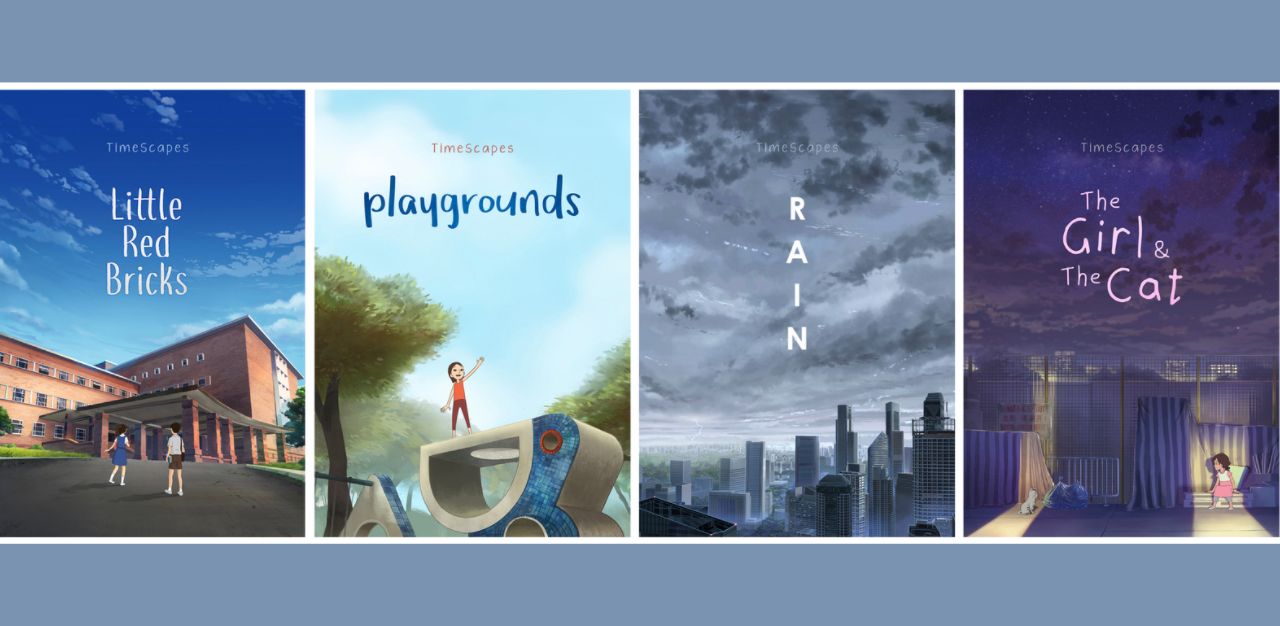
Join the conversations on TheHomeGround Asia’s Facebook and Instagram, and get the latest updates via Telegram.


